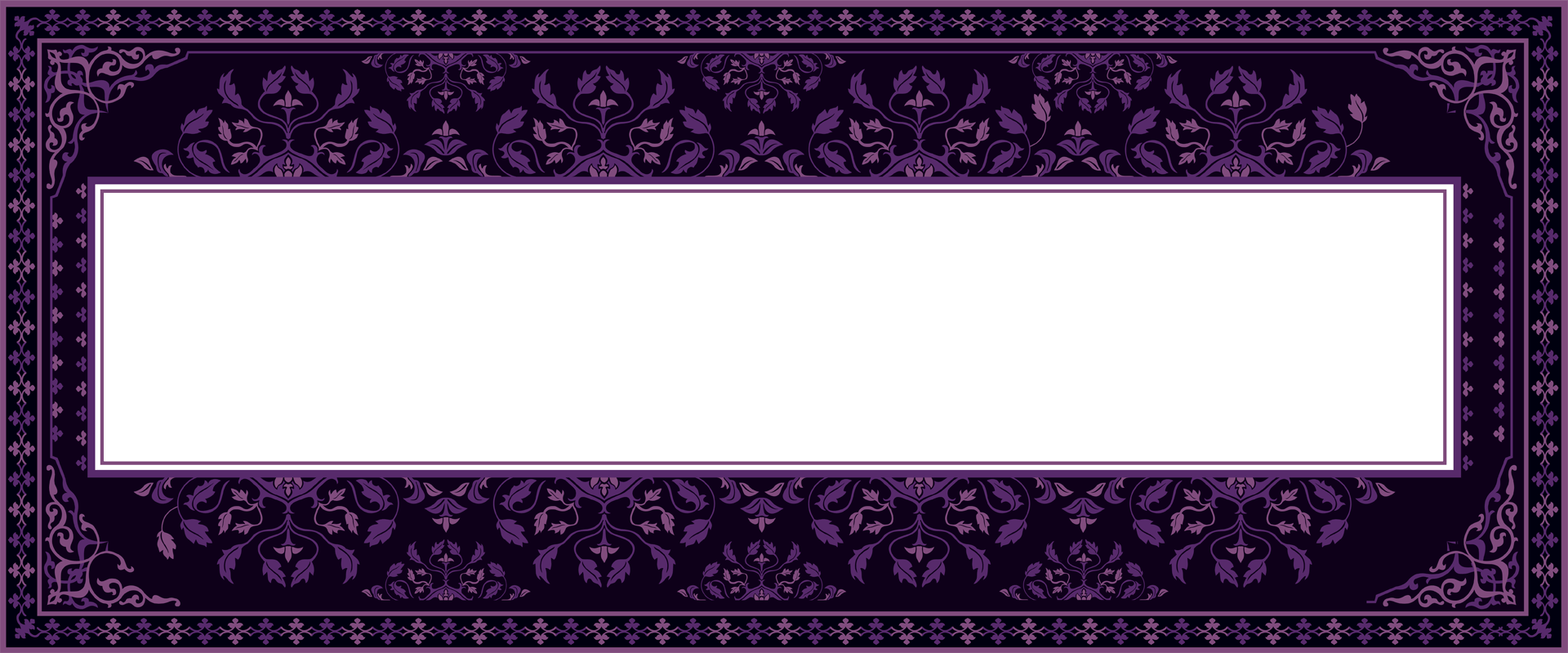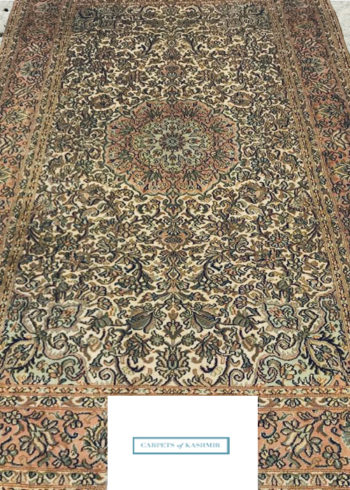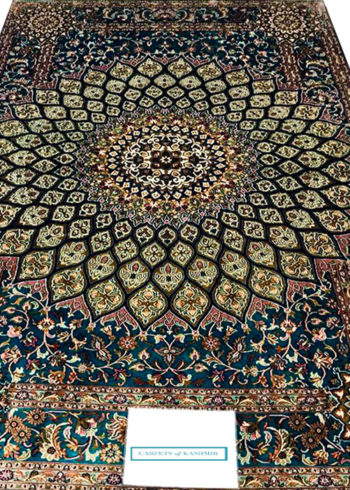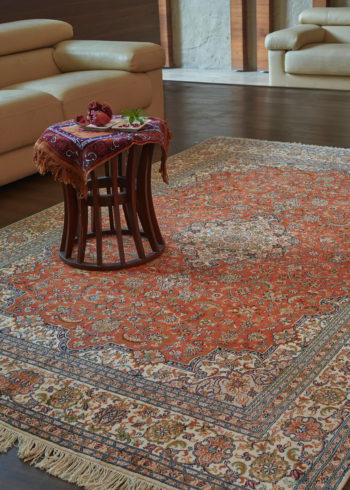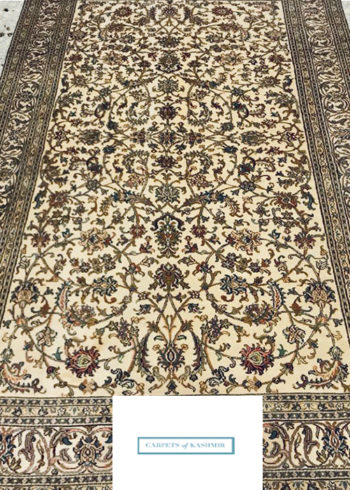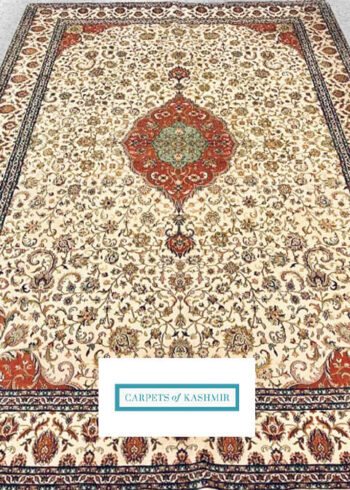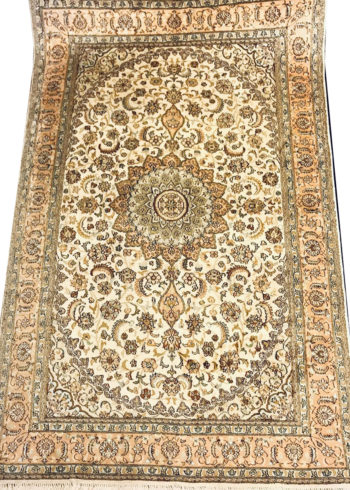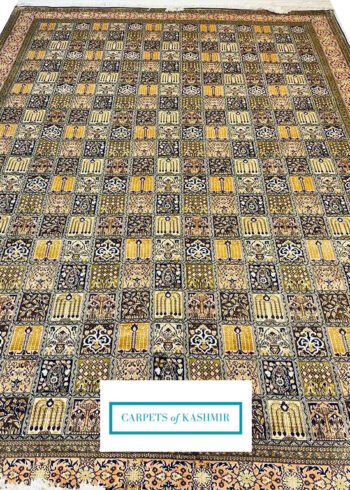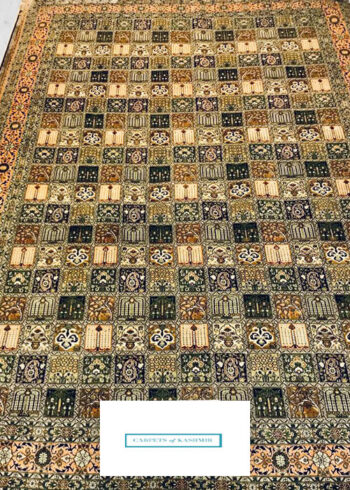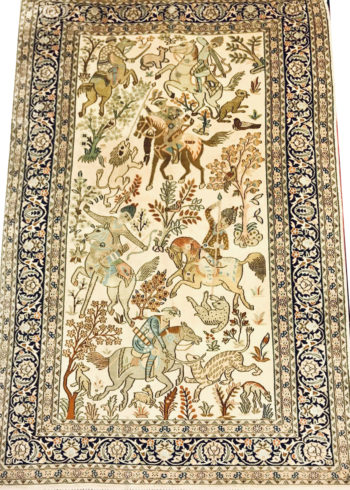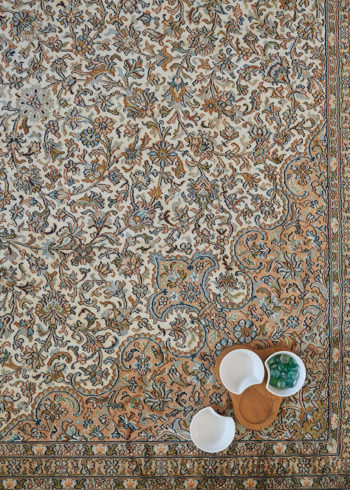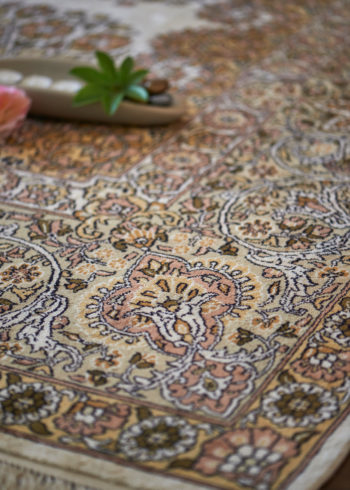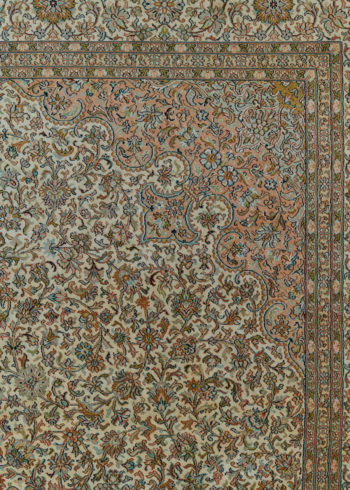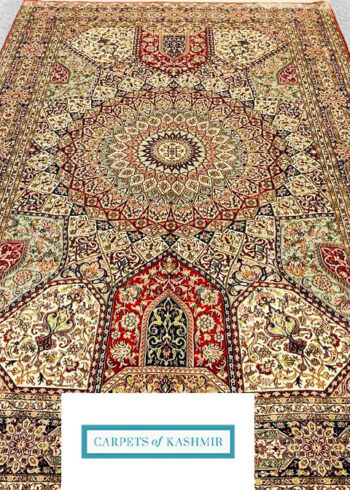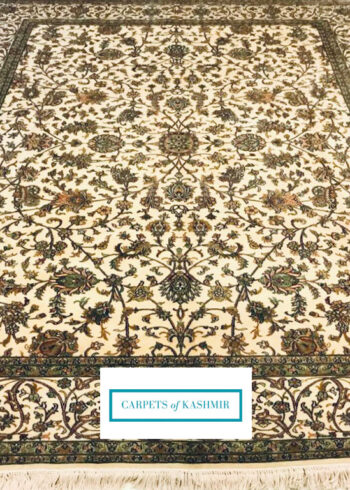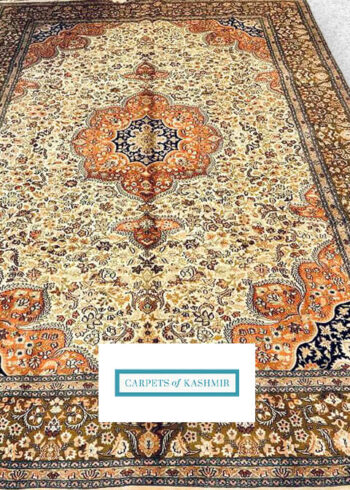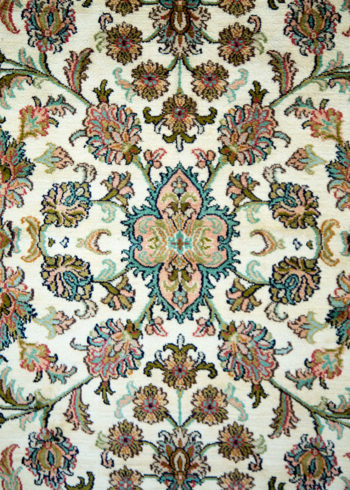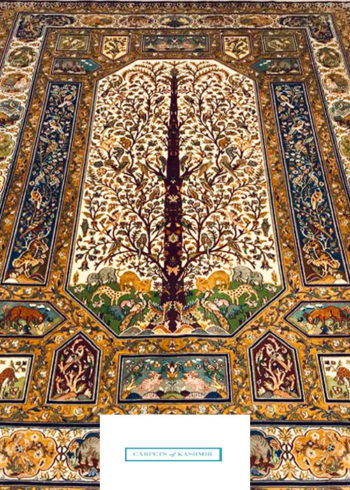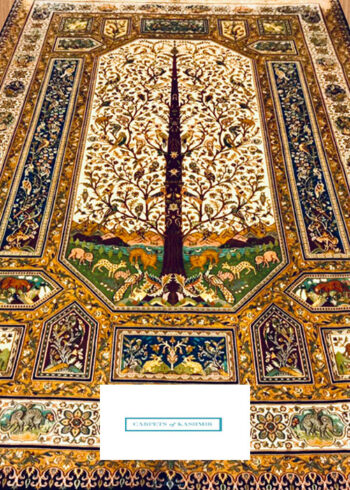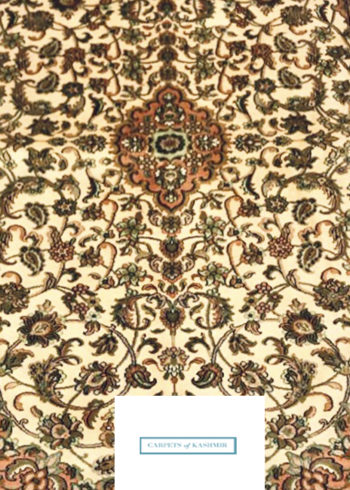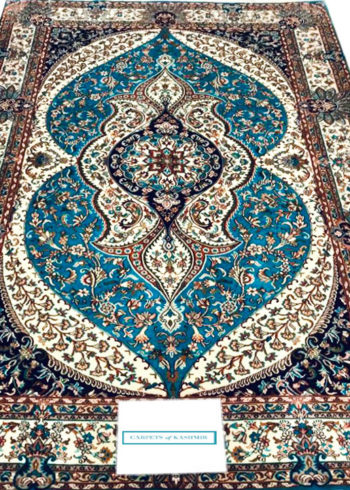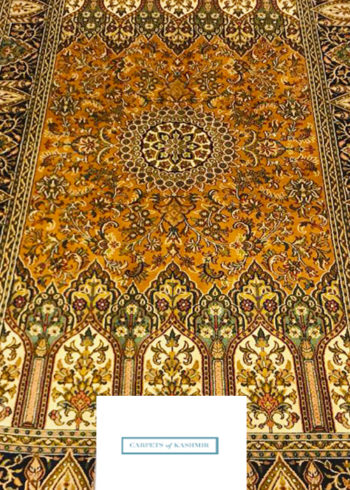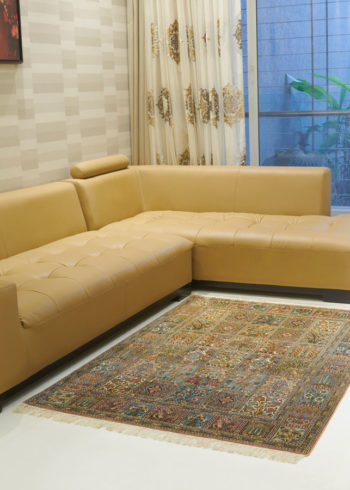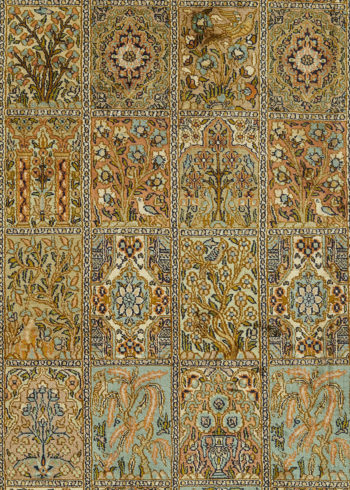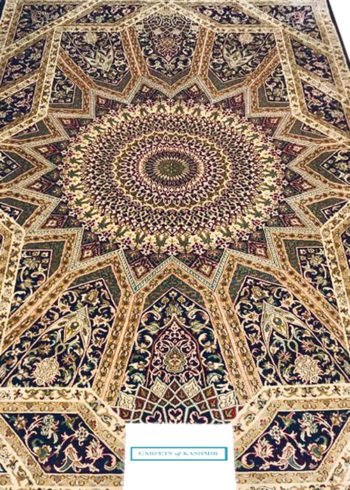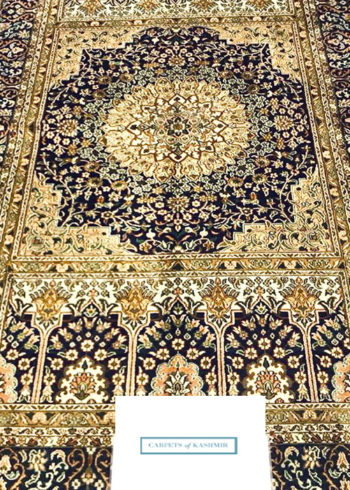From Craftsmanship to Masterpiece: The Intricate Process of Creating Kashmiri Hand-Knotted Rugs
Kashmiri hand-knotted rugs are renowned for their exquisite beauty, intricate designs, and exceptional quality. These rugs are not just decorative pieces but true masterpieces that embody centuries of craftsmanship and cultural heritage.
In this article, we will delve into the intricate process of creating Kashmiri hand-knotted rugs, exploring the skillful techniques, the use of natural materials, and the dedication of the artisans who bring these remarkable rugs to life.
You can buy the Kashmiri rugs from this website or our Mumbai based showroom; where we have 2000+ ready in stock Kashmiri rugs.
The Finest Natural Mulberry Silk Kashmiri Rugs »
Pure Silk
Pure Silk
Pure Silk
Pure Silk
Pure Silk
Pure Silk
Pure Silk
Pure Silk
Pure Silk
Pure Silk
Pure Silk
Pure Silk
Pure Silk
Pure Silk
Pure Silk
Pure Silk
Pure Silk
Pure Silk
Pure Silk
Pure Silk
Pure Silk
Pure Silk
Pure Silk
Pure Silk
Pure Silk
Pure Silk
Pure Silk
Pure Silk
Pure Silk
Pure Silk
Pure Silk
Pure Silk
Pure Silk
Pure Silk
Pure Silk
Pure Silk
Selecting the Finest Materials:
The creation of a Kashmiri hand-knotted rug begins with the careful selection of the finest materials.
The most crucial element is the wool, which is primarily sourced from the Changthangi breed of sheep found in the high-altitude regions of Ladakh. The wool from these sheep is known for its exceptional softness, durability, and ability to absorb natural dyes.
Experience the allure of living room luxury rugs, where the artistry of handcrafted design meets the plushness of the finest materials, creating a space that radiates refinement.
Once the wool is obtained, it undergoes a rigorous process of washing, carding, and spinning. The wool is thoroughly cleaned to remove impurities and then carded to align the fibers. Finally, the carded wool is spun into yarn, ensuring uniformity and strength.
We offer Kashmiri rugs in three materials: natural Mulberry silk, 100% pure Merino wool and a blend of silk wool.
The Intricate Process »
Designing and Preparing the Loom:
Before the weaving process can begin, the design of the rug is meticulously planned. The designs are often based on traditional patterns and motifs that have been passed down through generations. Skilled artisans create intricate patterns and motifs on graph paper or directly on the loom to guide the weaving process.
The loom used for weaving Kashmiri rugs is a vertical, non-mechanical loom known as a “khaddar.” The construction of the loom involves the assembly of two vertical beams, the warp and weft threads, and the shedding mechanism. The warp threads are tightly stretched on the loom, creating the foundation for the rug.
The Labor-Intensive Knotting Process:
The hallmark of Kashmiri hand-knotted rugs lies in the labor-intensive knotting process. Each rug is meticulously hand-knotted by skilled artisans, who tie thousands of knots using a small, hooked tool known as a “tumbe.” The knots are tied around pairs of warp threads, creating the pile of the rug.
The knotting process requires immense patience, skill, and attention to detail. Artisans follow the design and color scheme meticulously, knotting one row at a time. The density and tightness of the knots are crucial to the quality and durability of the rug. The more knots per square inch, the denser and more intricate the design will be.
Artisans may take months or even years to complete a single rug, depending on its size, complexity, and knot density. The meticulous knotting process ensures that each rug is a unique piece of art, with no two rugs being exactly alike.
Making of Authentic Hand Knotted Carpets »
Natural Dyeing: Infusing Vibrant Colors :
The vibrant colors found in Kashmiri hand-knotted rugs are achieved through the use of natural dyes. Artisans employ a wide range of materials, including plants, minerals, and insects, to create an exquisite color palette. The use of natural dyes not only enhances the beauty of the rugs but also ensures their eco-friendliness and longevity.
The process of natural dyeing is a skilled art in itself. The dyeing ingredients are carefully selected, and the colors are extracted through a series of processes such as boiling, soaking, and fermentation. Artisans employ techniques to achieve different shades and tones, allowing for a harmonious blending of colors in the final design.
Finishing Touches and Quality Assurance:
Once the knotting and dyeing processes are complete, the rug undergoes finishing touches to bring out its true beauty. This includes trimming the pile to an even height, washing the rug to remove any residual dye or impurities, and stretching it to ensure proper shape and dimensions.
During the finishing stage, the quality of the rug is meticulously assessed. Experienced artisans examine the rug for any imperfections, ensuring that the design is consistent, the knots are secure, and the colors are vibrant and well-balanced. Quality control measures are implemented to maintain the high standard that Kashmiri rugs are renowned for.
We at Carpets of Kashmir provide authenticity certificate: RugAssure with every carpets that is shipping.
Conclusion:
The creation of Kashmiri hand-knotted rugs is a meticulous and labor-intensive process that involves skilled craftsmanship, attention to detail, and a deep respect for tradition. From selecting the finest materials to the intricate knotting process and the use of natural dyes, every step is carried out with precision and dedication.
These rugs are not just floor coverings but true works of art that embody the rich cultural heritage of Kashmir. Each rug tells a story, reflects the artistic expression of its weaver, and stands as a testament to the enduring legacy of craftsmanship.
The creation of a Kashmiri hand-knotted rug is a labor of love, resulting in a masterpiece that will adorn homes for generations, bringing beauty, warmth, and a touch of tradition to any space.



